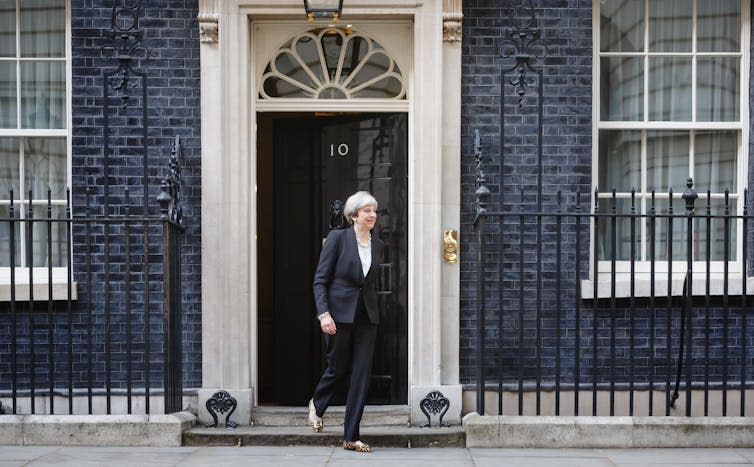What Labour’s election means for women: the good and the bad
It’s a good day for women’s representation in politics. The proportion of women MPs has reached a record high of 40.6%. Women are expected to hold a number of prominent positions in the new government, including the UK’s first female chancellor. Labour also has a stronger track record of women-friendly policies than the other parties. However, the picture is not entirely rosy.
The newly elected parliament includes 264 women. This figure surpasses the threshold of 40% for the first time – and is a big jump from the previous record of 34.2% in 2019. And women are not just on the backbenches, a number also hold senior frontbench roles, including Angela Rayner as deputy prime minister and levelling up secretary.
Women hold numerous positions in Starmer’s first cabinet, including home secretary and education and justice secretaries.
Perhaps most importantly, Rachel Reeves is the new chancellor of the exchequer, surrounded by a team of women advisers. This is a big deal, and not just because of policies explicitly targeted at women. As has been pointed out elsewhere, the general direction of Reeves’s economic policy should help many women in low-paid and part-time jobs.
Read more: Rachel Reeves is the UK's first female chancellor. Here's why that's so significant
The policies of the Labour party are usually more feminist than those of their rivals. When Labour was last in government, the introduction of the minimum wage affected more women than men, and was instrumental in tackling low pay for women. Other policies such as abolishing VAT on sanitary products were directly attributed to the rise of women in parliament under New Labour.
Conversely, the cuts made in the name of austerity under the Conservative-Lib Dem coalition government of 2010-15 hit women hardest. Austerity was even described by the charity Oxfam as “gender based violence”. More recently, COVID lockdowns and extended school closures had a major negative impact on women’s economic and mental wellbeing.
Want more politics coverage from academic experts? Every week, we bring you informed analysis of developments in government and fact check the claims being made.
Sign up for our weekly politics newsletter, delivered every Friday throughout the campaign and beyond.
Labour’s manifesto contains several policy pledges that will benefit women. A swathe of measures are included to tackle violence against women and girls, improve childcare options (from free breakfast clubs in primary schools to reinforced rights to parental leave), ensure the minimum wage is a real living wage, and strengthen workplace rights (including equal pay and protection against maternity and menopause discrimination and sexual harassment).
Still a way to go
But there are some caveats to the good news. First, the increased proportion of women in parliament is due to a change in governing party. Labour has 46.1% women within its parliamentary party, compared with 25% women in the Conservative majority of the previous parliament. But the proportion of women within the parliamentary Labour and Conservative parties has actually gone down, and other parties have not raised their game.
My previous research has demonstrated that long election campaigns are particularly detrimental to women, who have fewer resources of time and money to invest in working in a constituency for years. The beneficiaries of last-minute selections in this election were mostly men.
Second, while Labour are better than other parties at getting women onto the back and even front benches, they have never had an elected female leader. All three women prime ministers in the UK have come from the Conservative party. The glass ceiling in Labour remains surprisingly intact.

Third, Labour are better at supporting some women than others. While Labour’s class and ethnic diversity is better than other parties, some barriers persist. My research found that (in common with other parties) Labour has struggled to be inclusive of women who are working class, from an ethnic minority, or have caring responsibilities.
Research by Farah Hussain has shown that the party has particularly struggled to include Muslim women. The recent furore over the deselection of Faiza Shaheen and extended suspension of Diane Abbott led to accusations that the party has ongoing issues with ethnic minority women. To this end, the appointment of Shabana Mahmood as justice secretary is notable.
Fourth, women candidates are facing growing threats to their security, with Labour MP Jess Phillips saying the intimidation and harassment in this election was the worst she has ever experienced (she was even heckled throughout her victory speech). The trend of abuse of female candidates in the UK is persistent and poses a threat to democracy.
Finally, Labour’s position on the controversial issue of trans rights has led some gender-critical feminists to claim the party has abandoned women. Most notably, author JK Rowling, who has previously been a major donor for the party, accused Labour of a “dismissive and offensive approach” to women’s concerns. Many in Labour do not share Rowling’s views, but this sensitive issue is likely to cause ongoing disagreement within the party.
Overall, many women will be satisfied with the outcome of this election. But until all parties have gender-balanced representation, women from all backgrounds are included in politics and the glass ceiling is fully broken, the battle for equal representation goes on.
This article is republished from The Conversation under a Creative Commons license. Read the original article.

Rainbow Murray does not work for, consult, own shares in or receive funding from any company or organisation that would benefit from this article, and has disclosed no relevant affiliations beyond their academic appointment.


